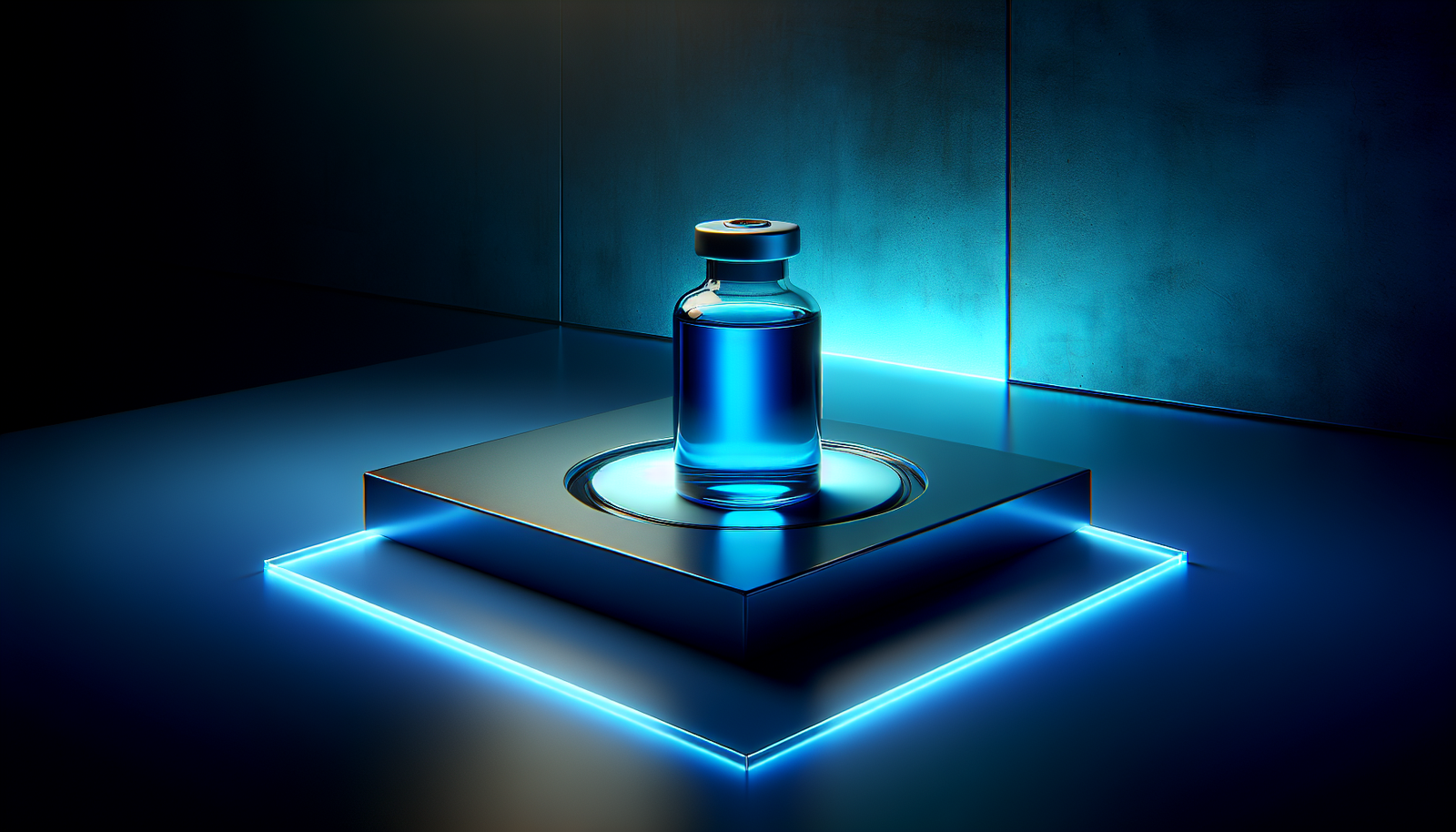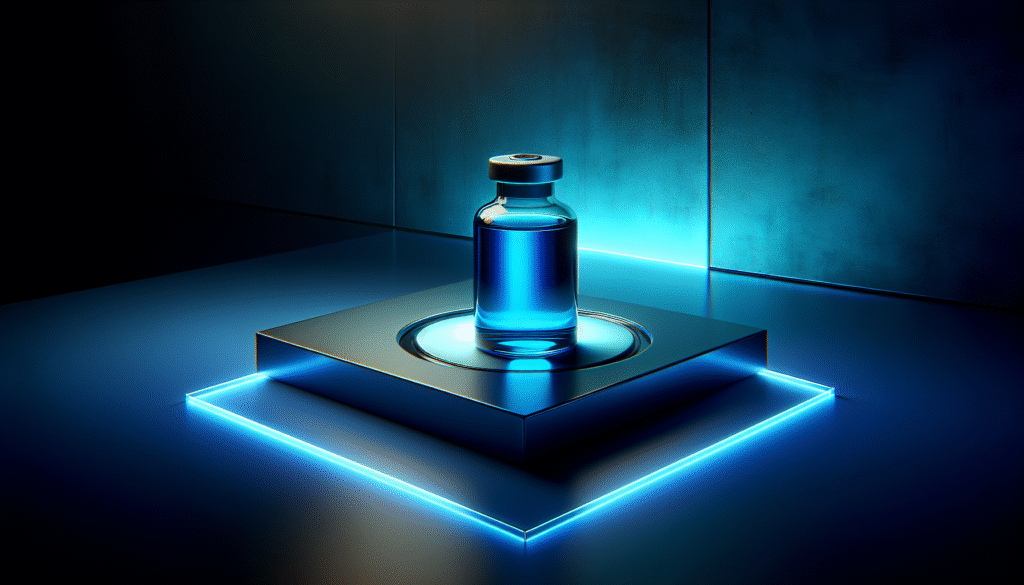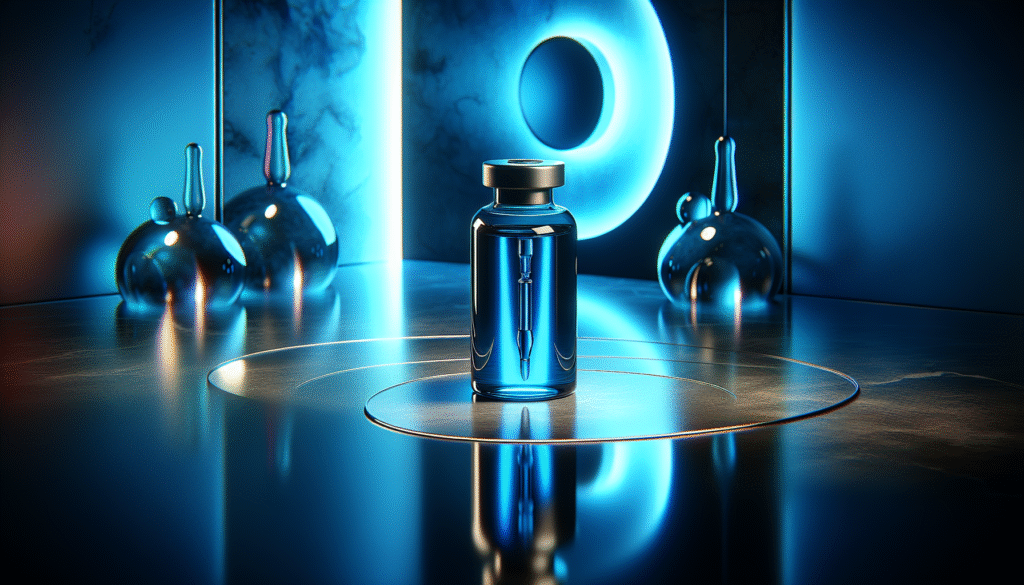
Have you ever wondered how certain compounds can influence the effects of light on your body? The intersection of biochemistry and light therapy is a fascinating field that continues to evolve with ongoing research. You may find yourself intrigued by the roles that substances like methylene blue play in conjunction with blue light therapy, especially regarding the potential benefits to your health and wellness.

Understanding Methylene Blue
Methylene blue, a synthetic dye with a rich history, is utilized across various fields, including medicine and biology. Initially developed in the late 19th century as a textile dye, its properties have led to applications in treating conditions such as methemoglobinemia—a disorder where hemoglobin is unable to efficiently carry oxygen.
Chemical Structure and Properties
Methylene blue, scientifically known as methylthioninium chloride, possesses unique chemical characteristics. Its molecular formula is C16H18ClN3S, which enables it to interact with biological systems distinctly. The compound is soluble in water and exhibits a deep blue color, a feature that has contributed to its identification and utilization.
In the context of blue light therapy, understanding the properties of methylene blue is crucial, as it can absorb and react to specific wavelengths of light, generating biochemical changes at the cellular level.
The Mechanism of Action
Understanding how methylene blue works can shed light on its therapeutic potential. Its primary mechanism involves acting as an electron carrier in the mitochondrial respiratory chain, enhancing cellular respiration to improve energy production.
Mitochondrial Function and Energy Production
Mitochondria are often referred to as the powerhouses of the cell. They produce adenosine triphosphate (ATP), the energy currency of the cell. Methylene blue has been shown to help drive this process in conditions where mitochondrial dysfunction occurs, such as neurodegenerative diseases.
1. Enhancing ATP Production
When you introduce methylene blue into the system, it can facilitate the movement of electrons within mitochondria. This can lead to an increase in ATP production, providing more energy for cellular processes.
2. Antioxidant Properties
Methylene blue also exhibits antioxidant properties, which can protect cells from oxidative stress. This is particularly important, as oxidative stress has been linked to various chronic health issues, including aging and degenerative diseases.
Blue Light Therapy Explained
Blue light therapy is a treatment that uses specific wavelengths of blue light, typically in the range of 400 to 495 nanometers, to influence biological processes in the body. It is commonly used in dermatology but has shown promise in various other health applications, particularly in mood regulation and sleep enhancement.
Applications of Blue Light Therapy
A variety of health conditions can be addressed through blue light therapy, such as:
- Acne: The antibacterial properties of blue light can help reduce acne outbreaks by targeting the bacteria responsible for the condition.
- Seasonal Affective Disorder (SAD): Exposure to blue light can regulate circadian rhythms and improve mood for individuals affected by this type of depression, particularly during darker months.
- Sleep Disorders: Studies indicate that blue light may influence melatonin production, an essential hormone for sleep regulation.
The Synergy Between Methylene Blue and Blue Light Therapy
The integration of methylene blue with blue light therapy presents a fascinating area of research. When both are combined, they appear to complement each other, potentially enhancing therapeutic effects.
Enhanced Cellular Responses
When exposed to blue light, methylene blue can initiate photochemical reactions that further stimulate cellular processes. This cooperation can lead to heightened ATP production and increased cellular respiration, offering a synergistic effect that may enhance overall treatment efficacy.
Table 1: Summary of Actions
| Therapeutic Component | Mechanism | Potential Benefits |
|---|---|---|
| Methylene Blue | Electron carrier | Increased ATP production, antioxidant effects |
| Blue Light Therapy | Photobiomodulation | Mood improvement, acne treatment |
Potential Applications
Considering the complementary mechanisms of methylene blue and blue light therapy, several applications emerge:
-
Skin Treatments: Methylene blue could enhance the effects of blue light therapy used for various skin conditions, promoting faster healing and regeneration.
-
Mood Enhancement: When combined, these therapies might provide additional benefits for managing mood disorders, providing a more holistic approach to treatment.
-
Chronic Pain Management: Exploring therapies that combine methylene blue with blue light could lead to new methods for addressing chronic pain by reducing inflammation and promoting healing.

Safety and Considerations
When evaluating the combination of methylene blue and blue light therapy, safety is paramount. Both treatments should be approached with caution and awareness of potential side effects.
Methylene Blue Safety Profile
While methylene blue is generally considered safe in controlled doses, it can cause adverse reactions in some individuals. These may include allergic reactions, staining of bodily fluids, or interference with certain medical tests.
Monitoring for Side Effects
Before undergoing treatment involving methylene blue, it is crucial to consult with a healthcare professional who can advise on appropriate dosages and monitor for any potential side effects.
Blue Light Therapy Considerations
Blue light therapy, while generally safe, can also produce side effects, especially for individuals with light-sensitive conditions. It is essential to:
- Use Protective Eyewear: Protecting your eyes from direct exposure to blue light can prevent damage.
- Duration and Intensity: Adjusting the intensity and duration of exposure is vital in mitigating side effects.
Future Directions in Research
The connection between methylene blue and blue light therapy opens up several pathways for future research. Currently, investigations are ongoing to uncover the full therapeutic potential of this combination.
Clinical Trials and Studies
There is a growing interest in conducting clinical trials that systematically evaluate the combined effects of methylene blue and blue light therapy. Through rigorous scientific inquiry, researchers can assess parameters such as efficacy, safety, and optimal treatment protocols.
Expanding Applications
Moreover, the investigation extends beyond dermatological and mood disorders. Researchers are exploring the implications of this synergy in broader areas, such as:
- Neurological Disorders: Understanding how these treatments could be harnessed for conditions like Alzheimer’s or Parkinson’s disease.
- Wound Healing: Investigating the potential for improved healing of chronic wounds and ulcers through methylene blue and blue light application.
Conclusion
The connection between methylene blue and blue light therapy represents a burgeoning field that reflects the intricate relationship between biology and therapy. As you consider the potential applications, it is essential to approach these treatments with a well-informed perspective.
It is your responsibility to conduct a structured inquiry and potentially consult with healthcare professionals before embracing new therapeutic avenues. Ultimately, the exploration of this combination could lead to innovative solutions for various health conditions, enhancing well-being and quality of life. Adopting evidence-based practices while remaining open to scientific advancements will ensure you stay at the forefront of health innovations.
By understanding both the mechanical and theoretical underpinnings of these treatments, you will empower yourself to make informed decisions regarding your health journey.